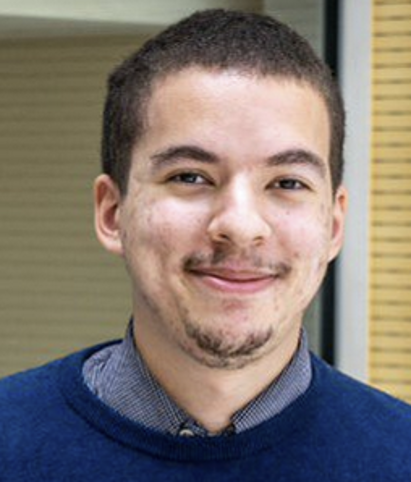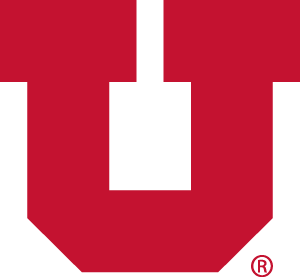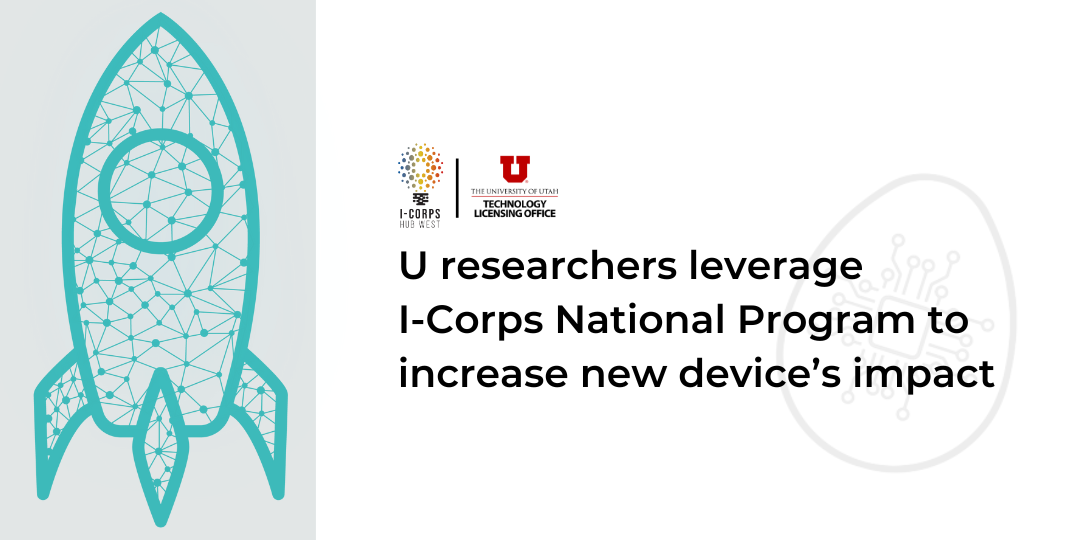Transitioning from an academic endeavor to a market-ready product can be daunting, and an essential first step is identifying potential consumers and the benefits of your idea. The U.S. National Science Foundation’s Innovation Corps (I-Corps™) Program guides researchers through that process with an emphasis on customer discovery and value proposition.
Recently, a team from the University of Utah NeuroRobotics Lab completed both the regional and national I-Corps programs, receiving $50,000 to delve deeper into the needs of their potential customers. The team, led by graduate student Michael Adkins, focused on how their rehabilitation and assessment device, the Electronic Grip Gauge (EGG), could be translated from the lab to the real world and impact stroke survivors.
Stroke survivors often suffer diminished motor function in the hand and arm on one side, which is often compounded by sensory loss. Due to these deficits in sensory and motor function stroke patients often struggle to handle everyday objects without dropping or crushing them. Traditionally, stroke rehabilitation has focused primarily on motor function, often overlooking the sensory aspect of hand dexterity.
The EGG is a handheld instrumented device that mimics a fragile object and allows patients to practice regulating their grip force, a task that integrates both motor and sensory function. Patients attempt to transfer the EGG over a vertical barrier without breaking it, and if grasped too hard, an audible break noise is emitted. As patients grasp and move the EGG, multiple onboard sensors provide real time quantitative metrics for hand function such as average grasp force, transfer speed, number of EGG breaks and more.
“We built a new type of assessment and rehabilitative tool focused on fine sensory motor function,” Adkins said. “We want to help people grab a fragile object and lift it without breaking it or dropping it.”
I-Corps was really helpful for figuring out the intricacies of things like who we should sell the device to first or what market is easiest to break into. It also helped us define what needs the EGG is meeting. You're not only having to think about the patient benefit, but also asking if it’s easy for the therapist to use and if it interrupts their workflow.
Finding a market
The team was confident the EGG could benefit patients, but they needed to answer a few questions before commercializing it as a marketable product. Who would buy the EGG? Would patients benefit from using the EGG at home or in the clinic? How would the EGG fit into existing product offerings?
 U graduate student Michael Adkins and a team of researchers recently completed the NSF I-Corps program.I-Corps gave the team the training and motivation to find answers to those questions. During the regional programs, ZAP and BOOM, the team started exploring potential customers and developing a business model, but the real work started when the team started the national program in early 2024.
U graduate student Michael Adkins and a team of researchers recently completed the NSF I-Corps program.I-Corps gave the team the training and motivation to find answers to those questions. During the regional programs, ZAP and BOOM, the team started exploring potential customers and developing a business model, but the real work started when the team started the national program in early 2024.
Teams accepted into the National Program receive a $50,000 grant to fund their customer discovery efforts. The NeuroRobotics Lab is located in the Craig H. Neilsen Rehabilitation Hospital, giving the team easy access to one of their primary markets, occupational and physical therapists, but the team knew they needed other perspectives as well. They used their grant to complete the 100 interviews required to complete the program.
Over the course of two months, Adkins and the team interviewed 38 occupational therapists, 15 physical therapists, 12 stroke survivors, and 36 other potential customers and partners (CEOs, manufacturers, distributors, etc.). They drove to thirteen clinics throughout Utah and even flew to Boston to attend a physical therapy conference to conduct in-person interviews. The outcome of over 50 hours of interviews was a better understanding of their ideal customer and how the product would be used as well as an evidence-based lean business model canvas to help guide translation of the EGG into a real-world product.
“I-Corps was really helpful for figuring out the intricacies of things like who we should sell the device to first or what market is easiest to break into,” Adkins said. “It also helped us define what needs the EGG is meeting. You're not only having to think about the patient benefit, but also asking if it’s easy for the therapist to use and if it interrupts their workflow.”
They concluded that the best group to target first was outpatient occupational therapists as opposed to inpatient therapy or at home users. Outpatient occupational therapists work with stroke patients guiding the rehabilitation process for the hand and arm and have more time to focus on tasks involving sensory and motor function. Eventually, they hope to expand to at home users through a new Medicare billing code that covers the remote monitoring of a patient’s exercises. The EGG would be a perfect candidate because of its ability to provide and track real-time measurements that can be sent back to the therapist.
Next steps
After successfully completing the NSF I-Corps program and submitting more grant applications, the team is confident and ready to pursue next steps. Adkins is working on adding visual feedback to the EGG to go along with the auditory feedback, while also planning research and clinical trials with stroke patients.
The EGG recently won Best in Engineering at the 2024 Bench to Bedside competition, and the team is looking forward to competing in other business competitions like the Utah Entrepreneur Challenge.
Interested in participating in the I-Corps program? Contact the Utah I-Corps team!







